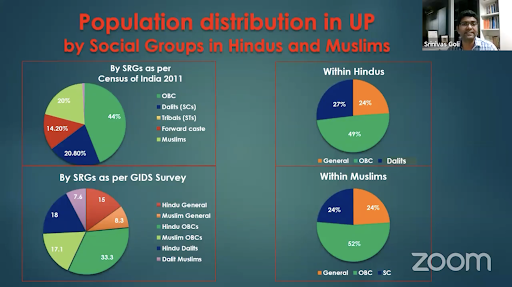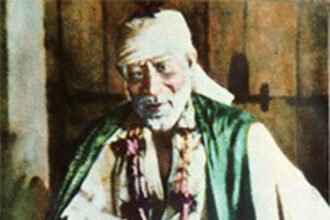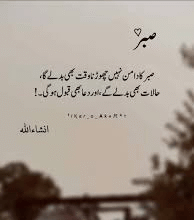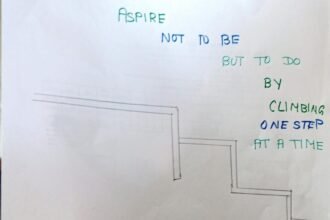Introduction
This article explores a sensitive and important topic: caste in Islam.
We will explain its history, beliefs, and modern experience in simple words.
The goal is clear, respectful writing that anyone can follow.
Short sentences and simple language make it easy to understand.
You will read facts from research and examples from real-life experiences.
We will test ideas with evidence and offer steps to reduce harm and exclusion.
By the end, you will know how the phrase is used and why it matters.
What People Mean by ‘Caste in Islam’
When people say caste in Islam, they often mean social ranking by birth.
This includes family lines, titles, and rules about whom to marry or trust.
In many villages and towns, these rules shape daily life and opportunities.
People may inherit jobs, social honor, and limits from their ancestors.
Some groups adopt noble titles to gain respect, jobs, or power.
Other groups are linked to work that is stigmatized or poorly paid.
These patterns can last for generations and affect many lives.
Scholars debate whether the term “caste” fully fits every place.
Regardless, the social impact is real for many people across regions.
What Islamic Texts Say About Equality
Core Islamic texts teach equality and dignity for all humans.
The Quran calls all humans one family and links worth to piety.
One verse notes God made nations and tribes so people may know each other.
Prophetic sayings remind believers that no Arab is better than a non-Arab.
Many scholars use these teachings to argue against birth-based rank.
These texts form the moral foundation that opposes social prejudice.
At the same time, local customs and politics sometimes diverged from these ideals.
Understanding scripture explains why reformers use faith to fight bias.
Historical Roots: How Local Customs Met Religion
When Islam spread, it met many local social systems and traditions.
In South Asia, ancient caste customs were deeply rooted in village life.
Many converts kept older social rules and inherited occupations.
New elites often claimed noble or foreign descent to show higher status.
This helped them gain power, land, and special privileges.
Military service, land ownership, and religious patronage also shaped local hierarchy.
The mix of religion and local history led to caste-like patterns.
Scholars study this to explain why these customs persisted.
The Ashraf-Ajlaf-Arzal Classifications
In South Asia, scholars describe Ashraf, Ajlaf, and Arzal groups.
Ashraf claim noble or foreign ancestry and enjoy higher status.
Ajlaf are linked to specific trades or later converts.
Arzal denotes marginalized communities at the bottom of social hierarchy.
These categories influence marriage rules, prestige, and local life.
They are not part of classical Islamic law or the Quran and hadith.
These labels grew from local history and power structures.
How Caste-Like Systems Work Day to Day
Caste-like systems shape daily habits and choices for many people.
They influence marriage, dining, neighborhoods, and employment.
Families may avoid certain jobs to protect perceived status.
Young people face pressure over whom they may marry.
Groups set social rules and councils to judge behavior.
Councils can help members but also exclude others.
Discrimination can be visible in public and private life.
People often lose opportunities due to birth, clan ties, or stigma.
Regional Variation: South Asia and Beyond
Social rank varies greatly by region and history.
South Asia shows strong caste-like patterns among Muslims.
In the Middle East, tribe and lineage often shape status more than caste.
In parts of Africa, ethnicity and family networks affect social rank.
Colonial administration in South Asia recorded and hardened social labels.
Migration, politics, and land relations also influenced social hierarchy.
Some communities formed caste associations to protect jobs and honor.
Others resisted stigma through civil rights and community work.
Recent Research and Surveys
Recent studies show complex patterns of identity and rank.
Many Muslims in South Asia report caste or caste-like ties.
Other surveys show many Muslims have no caste label at all.
Fieldwork documents social exclusion but also cases of mobility.
Researchers caution against broad labels and stress local study.
Research helps policymakers design programs that address real needs.
Evidence gives voice to people facing discrimination daily.
Religious Leaders and Reform Movements
Many religious leaders speak against birth-based prejudice.
They emphasize piety and character over lineage.
Sufi teachers stress service, humility, and equality for all.
Reformers promote education, mixed worship, and public events.
Some mosques hold programs that bring people from different clans together.
Civil society groups document abuses and offer support.
Community work can shift habits and reduce caste-like harms.
Legal and Social Policies That Matter
Laws can challenge social exclusion and stigma.
Some countries make untouchability and caste exclusion illegal.
Legal protections let victims seek justice and recognition.
Policies like scholarships, jobs, and quotas reduce inequality.
Laws alone cannot change cultural habits and social thinking.
Effective reform combines legal action with education and local dialogue.
Voices, Testimony, and Lived Evidence
Many share experiences of social rank affecting daily life.
Stories show both exclusion and hope for social mobility.
Education and migration sometimes improve status.
Others remain trapped by stigma and limited opportunities.
Centering these voices helps leaders create real solutions.
This approach builds credibility and ensures practical action.
How Communities Resist and Reform
Communities fight caste-like harms in multiple ways.
Education opens doors to jobs beyond inherited roles.
Intermarriage slowly loosens rigid social lines.
Local leaders model inclusive rituals and open public spaces.
NGOs provide legal aid, training, and awareness campaigns.
Business and market relationships create bridges across groups.
Faith teaching emphasizing equality can change hearts.
Practical Steps for Allies and Leaders
Listen to people facing harm.
Support education, legal aid, and economic programs.
Work with religious leaders to preach equality.
Share stories showing dignity and positive change.
Fund research that centers local voices.
Small acts of fairness at home, school, and work build new norms.
Long-term partnership and patience are key for real impact.
Media, Myths, and Common Confusions
The topic often breeds myths and rushed judgments.
Some reports exaggerate caste in every Muslim community.
Others deny any social hierarchy exists.
Both extremes block honest dialogue and effective action.
Balanced reporting includes local voices and accurate evidence.
Avoid blaming a whole faith for local customs.
Good journalism educates readers without panic.
Teaching the Topic to Children and Youth
Teach children that birth does not decide worth or dignity.
Use stories showing kindness, fairness, and shared play.
Explain history with clear examples from local life.
Encourage mixed teams and projects to build friendships.
Use faith texts that stress equality to build empathy.
Help youth question unfair rules inherited from elders.
Early learning can reduce future caste-like exclusion.
Key Terms to Know
Ashraf, Ajlaf, and Arzal are South Asian social groups.
Baradari refers to clan or brotherhood.
Endogamy means marrying within the same group.
Pasmanda describes marginalized Muslim groups.
Social hierarchy, discrimination, purity, and lineage are related frames.
Define terms carefully in local context.
Common Pitfalls When Researching
Avoid generalizing from one village or study.
Watch for colonial labels that froze social ties into boxes.
Check who benefits from claims of noble origin.
Confirm survey dates and local legal context.
Combine history, theology, and sociology for richer understanding.
This careful method strengthens credibility and usefulness.
FAQs
Q1: Does Islam teach caste?
No. Core Islamic sources do not teach caste by birth. Social hierarchies emerged from history, not theology.
Q2: Is caste only a South Asian problem?
No. South Asia shows the strongest patterns, but other regions have clan or tribal hierarchies.
Q3: Can Muslims from different groups marry?
Yes. Islam allows it, but social pressure can make it challenging in some places.
Q4: Are there laws against caste discrimination?
Some countries ban caste-based exclusion or untouchability. Laws alone are insufficient without social change.
Q5: How can I be an ally?
Listen, support education, legal aid, and fair opportunities. Amplify voices of those affected.
Q6: Is caste in Islam the same as Hindu caste?
No. Patterns overlap historically, but origins, rituals, and rules differ.
Conclusion
Caste in Islam is a complex social issue in many regions today.
It is not a teaching of core Islamic texts but a product of history.
Where it exists, it harms dignity and limits opportunities.
Learning, listening, and supporting those affected is key.
Education, legal aid, fair jobs, and inclusive leadership create lasting change.
Share evidence-based stories and avoid blaming whole communities.
Act with empathy, patience, and practical solutions to build a fairer society.









